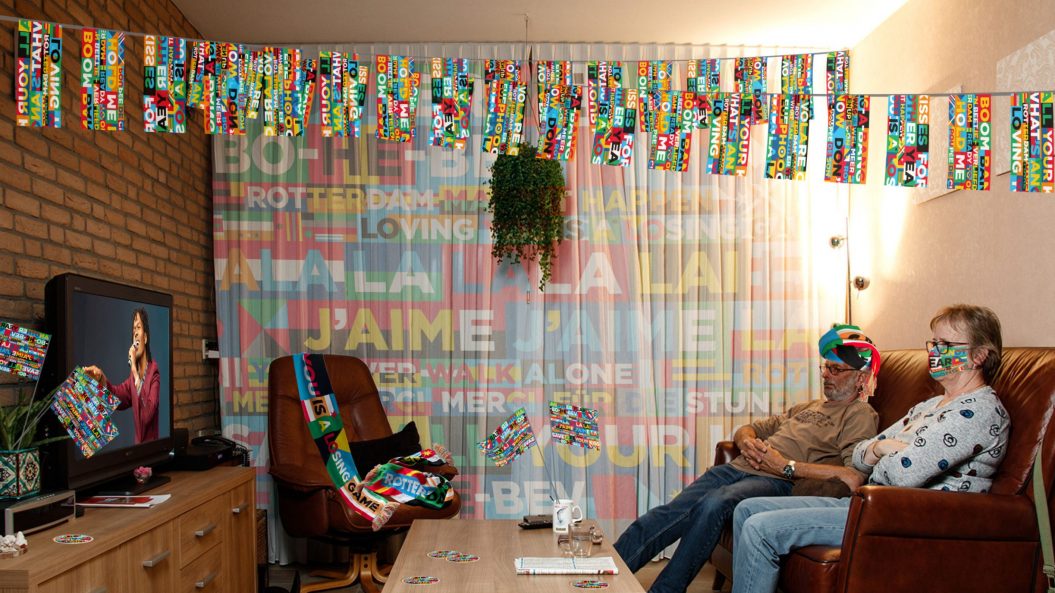In the months of March to May, students in the Urban Leisure & Tourism Lab Rotterdam, in collaboration with Rotterdam Make It Happen, tackled the following question: ”What innovations / concepts / experiences could help to involve residents (from certain neighbourhoods) in international hybrid events (online/offline) such as the Eurovision Song Contest?” In this blog series, the four student groups give an insight into their research process and answer the main question for the neighbourhood they have been doing their studies. The series is concluded with a blog by lab lead Ko Koens who reflects on the different concepts.
Ko Koens:
I have read with great interest the ideas developed by the student groups within the lab, as a result of our collaboration with ‘Rotterdam make it Happen’. The main question was: “Which innovations / concepts / experiences could help to involve residents (from certain neighbourhoods) in international hybrid events (online/offline) such as the Eurovision Song Contest?
The proposed projects are interesting and link up with the research line New Urban Tourism, which we are working on in Rotterdam. One of the key points of this line is to find ways in which tourism, tourism and events can contribute to the well-being of local urban users. Hybrid events have the potential to play an important role in this, as they offer the possibility of a shared experience that can be enjoyed both online and offline, thus providing new opportunities for inclusivity and collaboration.
The examples of the students also focus on this, showing how important it is for local events to be supported by the community, with an eye to value creation by making use of local expertise. In principle, this is also reflected in all the ideas – using international events to create community cohesion in local communities. It is interesting to see that two groups here have a content-related focus and two groups a place-related focus.
In terms of content-oriented ideas, the idea of ‘The Happen Club’ whereby events in cafés can watch live streams on a large screen is a nice way of bringing people together for events. Of course, this is not entirely new, but more joint interaction with other visitors is certainly a nice way to come up with locally supported solutions, especially if they are also stimulated to interact with each other in other ways (e.g. joint twitter feeds on televisions, or a quiz or something similar).
I can also see common ground here with the concept of bringing people together in care homes and senior citizens’ complexes (most people who live here nowadays are quite a bit older than 65+) and then bringing the event to them. The idea of sharing memories may indeed work well for this target group, but some of them may also be looking for more interaction with others in the neighbourhood and would like to join ‘The Happen Club’.
The groups with a location-specific focus – in this case Katendrecht – bring up two important tasks, namely bringing people together in various neighbourhoods and how to get people enthusiastic about joint events. With regard to the first question, it is interesting to read about the ‘differences’ between different groups of residents, be it between residents from different backgrounds or who have lived in the neighbourhood for some time and new residents. Different groups have different interests, which are sometimes even completely contradictory.
These kinds of conflicting interests are characteristic of our modern diverse cities, but we still do not have a good solution for them. Involving different groups of residents more and stronger in the neighbourhood is recognised by almost all stakeholders in the city, but the question remains: how do you do this in practice? These are the kinds of questions we are working on in the research line and the students are making an interesting contribution.
One group emphasises the shared experience that large events can offer to people with different interests. By physically bringing these different groups together in the context of an event, where the event is linked to something ‘proper’ – an individual experience or dish, barriers may be broken down. Of course, it remains difficult that not everyone will join the same events and one event alone will not make the difference – so more is needed to achieve more unity.
On this point, the concept of the other group in the Afrikaner district offers a solution. Instead of focusing on experiencing big events together, they choose to organise ‘side-events’ at the local level that fit in with the theme of the big event. The idea of ‘Let’s Swing Afri’ elaborates on this. In this case, by linking a local musical talent show to the event, but this can also be done in other ways. Such a concept could possibly be developed into annually recurring events that have a long-term impact. As the Group itself states.
The concepts that have been worked out invite further reflection and elaboration, also within the research line. An interesting aspect of such projects is, for example, to learn more about possible business models that could fit in here. It is also essential to find out who within the playing field of government, business, NGOs, citizens and education can and want to take the lead and ownership, so that the concepts devised by the students, or parts of them, can actually be implemented.


